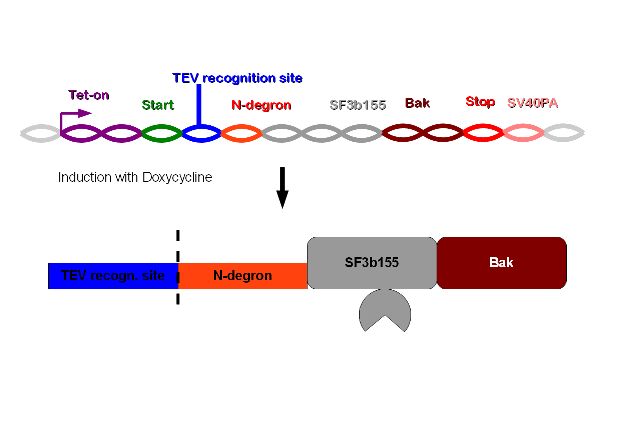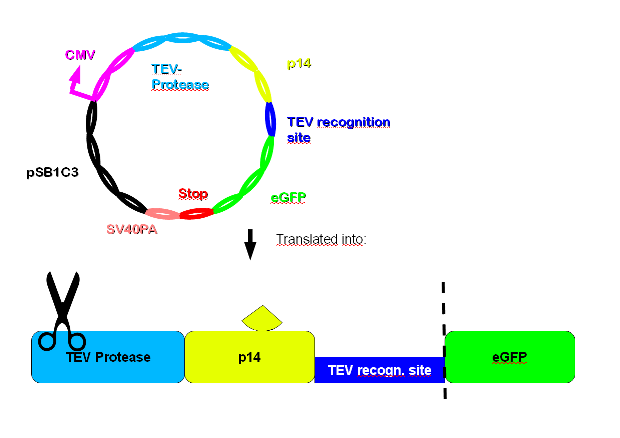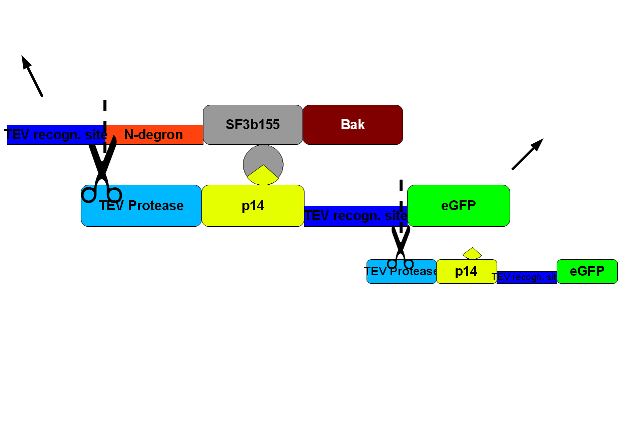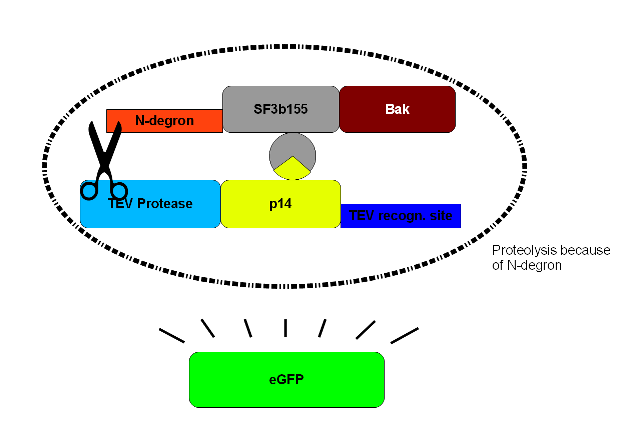Team:LMU-Munich/Cut'N'survive/Functional Principle
From 2010.igem.org
(Difference between revisions)
(→Construct 1) |
(→Construct 2) |
||
| Line 18: | Line 18: | ||
Construct 2 is composed of CMV-promoter, TEV-protease, p14, TEV-recognition site, eGFP, a double stop codon and SV40PA. | Construct 2 is composed of CMV-promoter, TEV-protease, p14, TEV-recognition site, eGFP, a double stop codon and SV40PA. | ||
| - | [[Image: | + | [[Image:cutwik.jpg|600pxs|TEVdegron-System: TEV-degron-System]] |
The CMV-promoter is for the expression of construct 2. The task of TEV-protease is to cut TEV-recognition sites, both the one upstream of N-degron to trigger protein degradation and the one upstream of the target gene (eGFP in this case) to ensure that the wanted product is not degraded. p14* is interacting with SF3b155 and so increases the rate of specific digestion at the TEV-recognition site by the TEV-proteases. eGFP is an example of a gene of interest which can conveniently be verified by green fluorescence. | The CMV-promoter is for the expression of construct 2. The task of TEV-protease is to cut TEV-recognition sites, both the one upstream of N-degron to trigger protein degradation and the one upstream of the target gene (eGFP in this case) to ensure that the wanted product is not degraded. p14* is interacting with SF3b155 and so increases the rate of specific digestion at the TEV-recognition site by the TEV-proteases. eGFP is an example of a gene of interest which can conveniently be verified by green fluorescence. | ||
Revision as of 16:28, 24 October 2010


![]()
![]()







![]()
 "
"





